Search the Community
Showing results for tags 'shards'.
-
I theorize each Shard has its own “pathway to power.” This pathway is the conduit down which a Shard’s Spiritual Realm power enters the other Realms. Each pathway is a unique medium for the transmission of magical energy between the Realms. Metal, spren, water, and electromagnetic radiation (EMR) are examples. The idea and term “pathway to power” comes from Marasi’s POV in this Bands of Mourning passage (Chapter 28, Kindle p. 359, emphasis added): Here’s how I think pathways work in my magic systems model: 1. A magic user consumes a “catalyst” to start the magic (burns metal, infuses Stormlight, dehydrates, drains “color,” etc.) 2. The catalyst activates each Shard’s pathway to Spiritual Realm power. 3. The Spiritual Realm releases power down the pathway. 4. Each magic system’s Focus shapes the pathway to choose which power is released. 5. The Focused power Invests the magic user. 6. The magic user directs the Invested power for some magical effect. Brandon says, “The 'role' of the Shard has to do with the WAY the magic is obtained, not what it can do [emphasis added].” Elsewhere he says, @Jofwu calls the “unchanging/unchangeable” aspect of a Shard its “nature.” Because power isn’t “related to the Shards,” I believe a Shard’s pathway solely causes its nature. Each pathway transmits power differently. Ruin could use the same powers as Preservation; but Ruin’s increased net entropy pathway (“decay”) directly opposes metal’s crystalline molecular pathway (“stasis”). It’s “more natural” for Ruin to steal Allomantic powers by increasing net entropy (spiking). Jofwu calls a Shard’s changeable aspect “the Vessel’s expression of the Shard.” I think the Vessel’s expression embodies Brandon’s axiom that perception guides the use of power. IMO, a Vessel’s expression decides “the WAY the magic is obtained,” “the means of getting powers”: “Ruin stealing, Preservation gifting.” Ruin, for example, could give magic users power in ways other than spiking to express entropy. Brandon may have “flavored” pathways and expressions to correlate with Adonalsium life stages, a Jordan-esque “Wheel of Life.” I’m going to try to weave each Shard into a matrix of expressions, pathways, energy transmission mechanics (each pathways’ “science”), life stages, and narrative. I list the Shards in order of their “life stage.” Lots of speculation here. Enjoy the ride! Fortune [SPECULATION] Expression: Grants Foresight Pathway: Space-Time Continuum Mechanic: Special and General Relativity Life Stage: Conception Narrative: Adonalsium conceives the Physical Realm as a space-time continuum We don’t know whether “Fortune” is a Shard, but it’s a good candidate as hinted by its name. Here’s some speculation: Space-Time in the Cosmere Fortune tells Hoid (the most accomplished seer, says Azure) where and when he needs to be, but not why. It sounds like Hoid taps into the cosmere’s space-time continuum. Brandon believes in probabilistic time: “Possibilities upon possibilities, compounded upon one another. Infinite, overwhelming. The future.” (M:SH, Part Three, Chapter 3, Kindle Locs. 1055-1056.) Since our physics and the cosmere’s are the same except for Investiture, I think space-time constitutes the Physical Realm’s fabric, the substance that permeates the Physical Realm. Except possibly for Cognitive Realm splinters, Adonalsium’s mind and soul are alone until he creates the Physical Realm. IMO, conceiving space-time must precede the Physical Realm because the Physical Realm begins linear time, something unknown in the Spiritual Realm: “Time…had no relevance here. It was not a place. Location had no relevance. Only Connection…” (M:SH, Part Three, Chapter 3, Kindle Locs. 1031-1032.) IOW, space-time doesn’t exist in the Spiritual Realm except as a Connection between a soul and its place and time. How Fortune Works? Surprised by the Diagram’s accuracy, Odium tells Taravangian, “You did this without access to Fortune, or the Spiritual Realm?” (OB, Chapter 122, Kindle p. 1215, emphasis added.) This suggests accessing Fortune is an alternate means of seeing the future, different from looking directly into the Spiritual Realm like Kelsier does in M:SH. Fortune seems to avoid the “mind-breaking” Preservation warns Kelsier about. I think Riino’s globe (the “Rii Oracle”) is an example of an “interaction with nature” magic system. “Invested” mortals like Kaladin can interact with Fortune, but they can’t direct its magic. The Oracle seems filled with Fortune’s Investiture (a “milky light” that changes colors, unlike the Ire’s “blue-white light.” (M:SH, Part 5, Chapter 2, Kindle Loc. 1356.) Touching the Oracle IMO Connects Kaladin to space-time. Through that Connection, Kaladin sees Dalinar’s future confrontation with Odium in Thaylen City. Riino later places his bartered Stormlight in “some kind of globe.” (OB, Chapter 99, Kindle p. 926.) If this “globe” is the Oracle, it’s possible Riino needs to replace Stormlight Kaladin consumes to Connect to Fortune. This makes thermodynamic sense, because you need energy to access the Spiritual Realm, even “at the beginning of the highstorm…when realms blend.” (OB, Chapter 97, Kindle pp. 910, 911.) IOW, Kaladin may have accessed Fortune by consuming a Stormlight catalyst the Oracle holds to fuel his Connection to the Spiritual Realm. The Oracle’s magic to me resembles Aviar as much as atium. Aviar warn their bonded mortals about imminent danger. The Oracle sees farther than Aviar or atium, as we might expect from Fortune. Like Aviar, the Oracle creates a Cognitive Connection with Kaladin – the Investiture seems to know he’d want to see Dalinar’s dilemma. Other Thoughts It’s unclear whether Fortune has its own Shardworld. It may be the “Shard that isn’t on a planet,” appropriate for the Shard whose pathway is space-time. Maybe black holes are Fortune’s perpendicularities? I’m curious if we’ll find mortals who can direct Fortune’s magic along its space-time pathway – starship navigators like Dune’s Guild? Fortune may make FTL space travel possible, through black holes or as a navigation guide. FWIW, Feruchemical “Fortune” and the Shard Fortune (if there is one) may not be 100% the same thing: “when they use the word ‘fortune,’ do they mean exactly what the Feruchemical – and the answer is no. But it is a very similar concept.” Endowment Expression: Grants Life Pathway: Electromagnetic Radiation (EMR) Mechanic: Quantum Mechanics Life Stage: Birth Narrative: Adonalsium creates the cosmere: “Let there be light.” Quantum mechanics describes the behavior of matter and energy at the level of atoms and subatomic particles. Photons are a quantum of light. Breaths are essentially a quantum of Investiture. Quantum mechanics metaphorically fits the “Let there be light” moment, as does Endowment’s EMR pathway. Brandon says Endowment wants to start a cosmere market for magic. She creates Breaths by, IMO, adding life to photons, the “bio” in “biochroma.” Each Breath grants more life (the Heightenings). Even non-Nalthians can hold Breaths. This portability, Breath scarcity (related to the number of native Nalthians), and the fact Breaths as quanta are Investiture’s smallest usable “unit,” make Breaths the ideal currency for Endowment’s magic market. I believe that’s why Endowment chose Nalthis to reside on. I characterize Endowment as an “angel investor.” Her investment (uncoincidentally IMO) gives birth to the magic market. Endowment “endowed” Nalthis with a nest egg that, “Invested” wisely, could generate wealth for millennia. Her name shows how she interprets her pathway. Her social endowment includes the Returned, the prophetic avatars of her divine ideals. Devotion Expression: Sustains Life Pathway: Sub-Surface Ground Mechanic: Geothermal Energy Life Stage: Newborn Narrative: Adonalsium creates planets AonDor seems particularly location-dependent even for Sel. To me, Elantris resembles a newborn who fully depends on its mother. Aon Rao infuses Elantris and Elantrians with the Dor (like mother’s milk). Once the Shaod takes them, Elantrians don’t need any other form of sustenance – Devotion “nurtures” them eternally. The broken chasm line deprives Elantrians of their ability to heal and draw Aons, but they remain immortal. Elantrians lose Aon Rao’s power amplification as they distance themselves from Elantris (and their mother’s Spirit). I associate planet formation with Devotion. After its sun, a planet’s secondary energy source is geothermal energy, left in a planet’s mantle and core when formed. (The warmth of a mother’s love?) Geothermal convection at a planet’s core causes tectonic plate movement on a planet’s surface, like what happened with the chasm. I believe Devotion and Dominion chose Sel because their pathways and mechanics suit a world that (IMO) holds Adonalsium’s inherent Investiture in its ground. Honor Expression: Makes Cognitive Connections Pathway: Neural Synapses Mechanic: Synaptic Plasticity – affects the strength of synaptic connections Life Stage: Infant Narrative: Adonalsium begins to Connect his creations into Spiritwebs Infants start to explore and Connect to the people and things in their world. Neural synapses are how the brain makes Connections. Synapses are the gaps between neurons across which the neurons electrically communicate. IMO, synapses are Honor’s pathway. “Synaptic plasticity” refers to the ability of synapses to strengthen or weaken over time in response to synaptic activity levels. Perceived Connections between people, planet and things, reinforced with use, strengthen synaptic connections. Spren enter the Physical Realm through a Cognitive bond with their host. I believe Roshar’s spren bonds attracted Honor to Roshar. Surgebinders get Honor’s magic from the Nahel bond, a form of Cognitive Connection. IMO, oaths reinforce the Connection by strengthening the synapses in the KR’s brain hooking him to his ideals (the Radiant spren). Broken oaths end the synaptic Connection, leaving a mindless spren that’s missing “a piece of [its] soul.” Dominion Expression: Sets Rules Pathway: Ground Surface Mechanic: Gravitational Potential Energy Life Stage: Toddler Narrative: Adonalsium creates the cosmere’s “unifying laws” Dominion’s form-based “programming” gives access to the Dor. IMO, these forms are 2-dimensional representations of local landscape features, an “overlap between language, location, and magic on the planet…” (AU, “The Selish System,” Kindle p. 18.) On Sel, each unique magical population culturally interprets its native landscape. I think these interpretations become Dominion’s forms. My choice of gravitational potential energy for Dominion’s mechanic may seem weird. Potential energy is stored energy that doesn’t do anything until motion turns it into kinetic energy – like a rock that begins to tumble. Gravitational potential energy depends on the relative height of different parts of the landscape. Even minor elevation differences can yield energy. On Sel, “Vast continents and sweeping oceans create a diverse landscape, with an extreme amount of variation on this one planet.” (AU, Kindle p. 17, emphasis added.) Khriss describes “powers that permeate the landscape.” (AU, Kindle p. 17.) I speculate Dominion’s landscape-based access codes unlock Sel’s gravitational potential energy. At least some Selish magic seems activated by motion: Elantrians draw, JinDo dance, and Bloodsealers and Forgers impress essence stamps. Is Forton’s potion stirred? Perhaps this motion converts the potential energy into the kinetic energy that summons the Dor? Other Shardworlds’ magic systems don’t seem to start with motion. Linking gravitational potential energy with the toddler stage seems appropriate. A sedentary infant’s potential energy becomes the mobile toddler’s very kinetic energy as they learn to resist gravity and move. As the toddler’s world expands, authority needs to set boundaries on that energy. Dominion says, “Know your land and take dominion over it before you can extract its magic.” Cultivation Expression: Transforms Pathway: Life Mechanic: Evolution Life Stage: Puberty Narrative: Adonalsium “transforms” the cosmere to create life I leave Cultivation’s “life” pathway vague. If all cosmere life existed only in the Physical Realm, her pathway might be “living cells.” But spren, seons, and skaze are alive too. I believe Cultivation’s life pathway also winds through them. I think Roshar’s spren are the pathway that brings Cultivation’s power to Roshar’s native flora and fauna, the KR, and fabrials. Stormlight activates the spren pathway to manifest the power each spren personifies (fire, wind, gravity, growth, etc.). Khriss says, “this pattern (the bonding of spren to human) is merely an expansion of what already exists in the nature of the planet.” (AU, “The Rosharan System,” Kindle p. 536.) I believe Cultivation causes this “expansion.” IMO, Radiant spren are Adonalsium spren until Cultivation transforms them. Mutation is an evolutionary process. To me, the source of a KR’s power is the Radiant spren, made from some combination of Honor's and Cultivation's Investiture. The Nahel bond’s Cognitive Connection gives the KR the ability to direct the Radiant spren’s power and enjoy power’s benefits (like self-healing). I believe Cultivation also transforms Dalinar, Taravangian, Lift, and Renarin to help them resist Odium. Dalinar recovers his memories in time to assimilate and integrate them before Odium uses those memories to assault him. Cultivation knows Odium will come to Taravangian on his "bad" days, and I suspect Taravangian’s compassion – his Connection to others – will aid him. Cultivation changes Lift so she can metabolize food into Stormlight. Cultivation (IMO) changes both Renarin and Glys so they can bond each other. Renarin's name shows his uniqueness: “Like one who was born unto himself.” (OB, Chapter 52, Kindle p. 515.) Puberty transforms a person and makes them capable of creating life. That seems the natural life stage for Cultivation’s expression and pathway. Autonomy Expression: Grants Self-Sufficiency Pathway: Water Mechanic: Fluid Mechanics Life Stage: Parenthood Narrative: Adonalsium makes a planet with (IMO) its own self-sufficient consciousness Life needs water for self-sufficiency. Like Autonomy, water easily changes form. Autonomy prefers ocean worlds like Taldain and First of the Sun. Fluid mechanics (which includes aerodynamics) seems an appropriate choice for Bavadin, whom I believe is a shape-shifting dragon. Khriss says a Sand Master’s body water forges a temporary bond between him and the sand microflora. (AU, “The Taldain System,” Kindle pp. 369-370.) This bond lets the Sand Master draw Investiture from the Spiritual Realm to control the microflora’s growth and, consequently, the sand. IOW, water is the pathway down which the Sand Master pulls power from the Spiritual Realm and pushes it into the microflora. Brandon calls Roshar a “created” world. I think Adonalsium made Roshar last. The closeness of Roshar’s Cognitive and Physical Realms suggests Adonalsium gave Roshar its own self-sufficient consciousness. Roshar may represent Adonalsium’s Planet 2.0, a child planet that will grow itself. Roshar, FWIW, is also an ocean planet. I think the Urithiru basement icon of a figure with arms out-stretched above a blue disk refers to whatever consciousness raised the Rosharan continent from the water. Autonomy later does the same when its avatar raises the Pantheon. I suspect much of Autonomy’s “assigned Investiture” is found on Roshar. Preservation Expression: Maintains Stasis Pathway: Metals Mechanic: Metal Science Life Stage: Middle Age Narrative: Adonalsium is content with the cosmere as is Metals form regular crystal structures and have the lowest entropy of the matter states – closest to stasis. Adonalsium looks at his creation (the cosmere) with middle age’s self-satisfaction. He wants to keep what he has. Odium Expression: Breaks Cognitive Connections Pathway: Neuron Death Mechanic: Nonsynaptic Plasticity – affects neurons’ intrinsic excitability; overexcited neurons can cause cell death Life Stage: Later Age Narrative: Adonalsium ages, loses Connections, and foresees his death As people age, they lose Connection with family and friends. They become less responsive and lose their affect. Perhaps the Fain causes Adonalsium’s slippage – is the Fain a Physical Realm representation of Adonalsium’s Cognitive decline? Does Adonalsium foresee the need for heirs? I believe Odium’s magic users get their power by breaking their Cognitive Connections to other people. That’s my lesson from Odium’s failed attempt to turn Dalinar. Empty of feeling – “Alone…So alone” – Odium’s magic users fill their void with power. “Passion” can break these Connections – hate blinds, as does lust, gluttony, and shame. Though not passion, irresponsibility also breaks Connections – “It’s not my fault…” I think Odium’s pathway is neuron death. One way: high neuron stimulation over time (like from passion) can overexcite and kill neurons (“excitotoxicity”). To regain their power, a returned Fused IMO must lose more neurons to break more Connections. This may explain why many Fused can’t speak and appear imbecilic – they’ve come back so often and suffered too much brain damage. Odium is the Shard murderer. He kills the Vessel’s mind, leaving the Shard’s power undirected. IMO, Odium holds “the most frightening and terrible of all the Shards” because of his neuron death pathway. Ruin Expression: Decay Pathway: Increased Entropy Mechanic: Second Law of Thermodynamics: Entropy Life Stage: Death and Decomposition Narrative: Adonalsium dies and “decomposes” – Shatters into 16 pieces of greater entropy “Hemalurgy has a huge cost, ending in net entropy,” since power is lost in attribute transfers. I think a Hemalurgical victim’s decaying blood and Feruchemical attribute conversion into Investiture are examples of Ruin’s pathway of increased entropy. Hemalurgy uses metal as a Focus, but metal is Preservation’s essence, not Ruin’s. I think Ruin uses metal because it has the lowest entropy. Other choices would lose too much power in transit. To me, it makes thematic sense the Ruin-Preservation war should oppose entropy with the cosmere’s most entropy-resistant substance. Ruin ruined Ati. It decayed his will and personality until he gave in to Ruin’s destructive impulse. In Ati more than any other Vessel, nature and expression merged. Other Shards I omit Ambition because we only know its magic inferentially. I also agree with many posters that Wisdom is a Shard, but again, we don’t know its magic. I can certainly envision Ambition and Wisdom as Adonalsium “life stages.” Ambition falls between “self-sufficiency” and middle age. Wisdom should come between middle age and Cognitive decline (or so I’m told). Other Topics I discuss these topics in the following Spoiler: Recent WoB Supports Pathways Theory Meaning of “Essence” “Catalyst” as Cosmere Word Why Non-Metal Catalysts Are Invested The Role of Catalyst in Cosmere Thermodynamics: Awakening Catalysts and Identity
- 12 replies
-
10
-
Hi everyone, I was reading through the list of Aons at the back of Elantris, and I realized something: the Aon for “hope” is “Ati.” Ati, as in the man who was the host for Ruin? Who Atium was named for? Unfortnunately, as I was reading through, I could not find anything for Leras in the Aons... Is this just a coincidence? Or is there a connection through this (rather ironic) name? Maybe Ruin and whoever hosted Dominion or Dominion, the two Shards on Sel, had some sort of connection before the Shattering.
-
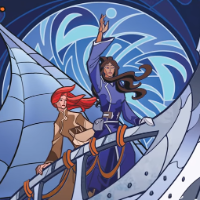
[OB] A framework for Shardic natures and their expression
Jofwu posted a topic in Cosmere Discussion
Note: Going to start this from scratch. See the bottom for original post hidden in spoiler tag. Since the release of Oathbringer there's been a lot of talk about the nature of Shards, and with good reason. First we have Odium's suggestions that he represents the larger concept of "Passion". Then at the end of the book we see Dalinar temporarily Ascend by pulling together pieces of Honor and making the mysterious statement "I am Unity". Meanwhile, Harmony's continued emphasis that his powers are "in conflict", paired with other hints, has led many to think that he could (and indeed may one day) go by the name of Discord. Throughout all of these discussions has been interwoven new concepts of what these Shards mean, the usage of the word "intent" in these contexts, and the degree to which all of these can change over time. The result is a jumble of confusion. So I've been playing around with a few of these concepts, trying to piece them together in a useful way. I'm not trying to redefine any existing terms, and I want to avoid the baggage that those words may carry. But I'm not really trying to create new terminology either. So I will be using fresh words, but I'll try to keep them as descriptive and plain as possible. Concepts I want to identify three distinct concepts: The Shard's nature: The fundamental aspect(s) of Adonalsium's own personality/nature that composes the Shard. Though we might try our best, this cannot be captured by a single word. Most of us tend to think that a Shard's nature is unchanging/unchangeable, though some may disagree with this point. You could in a way combine one Shard (or pieces of it) with another Shard (or pieces of one). You could perhaps rip pieces off of a Shard in a permanent way. These of course would probably give you something different, but that would be different than directly changing the very nature of the Shard. Some may argue otherwise. Many people will connect this with the concept of "intent", but I'm avoiding the use of that term because it may pull in some history that I don't necessarily want to assume. The vessel's expression of the Shard: How the Shard's nature is expressed by a particular vessel. Many believe it is possible for a single Shard to be expressed in different ways, depending on the vessel who holds it (or perhaps other factors.) What determines this is a matter for debate. Is it a function of the vessel's subconscious perception of the Shard's nature? Can the vessel freely choose, within some bounds? The vessel's thoughts and actions: What the vessel thinks and does. We could maybe separate this in two... but what we do with it is the same for each, so I'm going to keep things simple. This is about pinpointing how a particular thought or action fits into the concepts of the Shard's nature and its expression. Does a particular action fit in line with the Shard's nature? Does some thought or desire reach outside of the expression? Some would argue that actions and thoughts outside of the bounds of the nature and/or expression are impossible. Or perhaps that they are possible, but only in limited and/or temporary ways. The length of time a vessel has held the Shard may also come into play here. Visualization With those concepts in place, let's talk about how they fit together. Warning: you may feel that some cases are impossible. That's fine. I'm not theorizing all of these are possible. Just trying to put together a framework that allows for different logical viewpoints to be expressed. First let's focus on the nature and the expression. Note that these images are highly abstract. Hopefully that's intuitive, given that we're representing incredibly complex ideas with boxes in 2D space. Don't get hung up on the exact sizes, locations, and things like that. We have 4 different general (theoretical) cases: The full nature of the Shard is being expressed. Some people may think this is the only logical case, especially after the vessel has had time to be warped by the Shard. Example: If you think that Ruin under the stewardship of Ati portrayed all aspects of the Shard's nature, you would say that it looked like case 1. Some subset of the Shard's nature is being expressed. There's an implication here that some other vessel might display some other subset of the Shard's nature. You may think that this happens because the expression cannot extend outside the boundary of the Shard's nature. Example: If you think that Odium is more accurately a Shard which represents all emotion (perhaps Rayse is simply giving it a more hateful bent), then you would argue it is a case 2 situation. The full nature of the Shard is being expressed, in addition to some aspects outside of the nature. Here there is perhaps a notion that the Shard's nature is more of a "core concept" that the vessel can build on, rather than a boundary that the vessel's expression is contained by. Example: If you think that Honor portrayed some ideals which are outside the bounds of your perception of what the Shard really means, you would say he demonstrates case 3. Some subset of the shard's nature is being expressed, in addition to some aspects outside of the nature. This is basically just a mashup of cases 2 and 3, but I thought it was distinct enough to include. I reference specific cases in these examples for simplicity, but the reality is far from clean (unless you think case 1 is the only valid possibility). And nothing is likely to be black and white. I've shown a very idealized "case 2" above. A more accurate (though still highly simplified abstraction) depiction would be the image below. I DON'T intend for people to take this and then run through a list of Shards and categorize them into these three cases. The goal is simply to recognize different ways that the Shard's nature can (arguably) be expressed. Now let's talk about how the third concept, the thoughts and actions of the vessel, fit into these ideas. I've taken those general cases and marked a few distinct locations on each of them. I'm supposing that every thought the vessel has or action that the vessel takes will fall into one of these regions. There are 4 possibilities, all demonstrated in case 4: (a) The thought/action is within both the Shard's nature and expression. (b) The thought/action is outside both the Shard's nature and expression. (c) The thought/action is within the Shard's nature but outside the expression. (d) The thought/action is outside the Shard's nature but within the expression. This is where we talk about things like Vin killing Ati while holding the Shard of Preservation. Was she out at some point (b)? Or perhaps point (d)? Is such an action totally within the Shard's nature--just not within the the expression of it that Leras gave us? These are the kinds of questions we can ask. There are a lot of interesting things wrapped up in here. We can talk about the level of free will which vessels have for example. Is it difficult for a vessel to take some action outside of its Shard's nature? Is it even possible? How about the expression? If Rayse holds something more accurately called "the Shard of emotion" and I assume his expression of it is "Odium"... Is it difficult for him to do something loving? That is, something outside the expression but inside the nature? How much of this is self imposed, relating to the vessel's own personality and how much is it a matter of the Shard changing him? We can also talk about the role of time. Are brief actions outside some boundary less difficult than prolonged actions? How long before the vessel is warped toward's the Shard's nature? Was Ati instantly constrained into being more Ruinous, or how long did it take before he was unable to fight that nature completely? Examples Let's talk about some examples of how this helps us think through different situations. Again, I'm not trying to directly theorize with this. I'm speaking towards how we would use this to help ourselves think through and explain a theory. Example 1: Odium and Passion As one possibility we have case 1, where the Shard's nature is accurately described as "Odium". We observe an intent which fits this and Rayse is fully molded by it. His claims to be something else (Passion) are mistakes or lies by him. Another possibility is that we have case 1 where the Shard's nature is indeed Passion. For it to be case 1, it would mean that we simply haven't seen the Shard at work enough (in my opinion) to fully see how the Shard and the vessel fit this definition. It does... we just maybe haven't observed it. We've seen a lot of actions which are perhaps in one corner of the box (the Odium corner), but he's totally capable (and probably does) take actions that fit other "passions". A similar situation would be described by cases 3 or 4, where Passion (or something else) is the true nature, but for whatever reason the Shard is acting only with the intent of Odium in the cosmere. This could be a function of Rayse's control over his power, or there could be other factors at play. Example 2: Honor and Unity Let's theorize that Dalinar will somehow assemble a Shard by the name of Unity. I see two fundamentally different ways for this to happen... Let me suppose that Tanavast-Honor looked something like case 2 with actions tending to fall within his own expression. Visually, let's say the blue expression area fits in the left 2/3 of the nature box. Later we have Dalinar come along and pick up the Splintered pieces of the Shard once called Honor. He puts them back together, but by his own will, personality, values, or whatever his expression fits more to the right 3/4 of Shard's nature box. So for the most part we have heavy overlap between Tanavast's Honor and Dalinar's Unity. But the slight difference in which aspects of the Shard's nature are being expressed lead us to ascribe two different names. Dalinar is expressing something with more emphasis on unity aspects of the Shard than Tanavast did, and perhaps putting less value on the notion of "doing things because he said he would." Another similar idea would be that either Tanavast's Honor was a case 1 situation while Dalinar's Unity is a case 2 situation. (or vice versa) So Tanavast expressed the Shard more fully, but Dalinar leaves part of that out and thus looks a little different. (or vice versa) The second, fundamentally different, way that Honor could become Unity is if we actually play around with the Shard's very nature. Something more difficult and rare. This is where we have the theories that Unity will be created by merging some combination of Honor, Cultivation, and Odium. You could also take a more complicated approach here and suppose that Honor will be combined with pieces of other Shards. Or go the other direction and suppose that Dalinar will leave out pieces that once made up Honor when he puts it back together, leaving something that looks more like Unity in nature. Or maybe it's some of both things here. And a different approach would involve the idea of the nature itself somehow changing and shifting. Either by Dalinar's will or by some other cause, the Shard that we called Honor has been "pushed" or "pulled" into something more like Unity. Example 3: Harmony and Discord I would think that this looks mostly like the first concept with Honor and Unity. The combined Shard (made up of what was once Ruin and Preservation) has some overarching nature. Harmony is in a case 2 situation shifted towards one aspect of this nature, but it's possible to fill up some other portion of that nature instead. The really interesting question here is wrapped up in how that change (if possible) could happen. It would seem to me that the vessel is actively working to maintain the expression of Harmony (if that's the best name for it). Is it possible for him to maintain this indefinitely or will he inevitably be pulled into an expression which better fits the Shard's full nature? What would that be? In his efforts to be Harmony, has he been bottling up Discord (or whatever you want to call the currently unexpressed portion of his nature) which must find its way out? I also see one of the biggest problems with this whole framework here: what do you do when combining two Shards or expressions which are contradictory? How does that mesh? (obviously not easily, but it's hard to really demonstrate that visually with this) So... Thoughts? Again, I'm not outright theorizing anything directly here of course, but I think maybe this is a useful way of considering the interactions between vessels and the powers they hold. Original post, for the record:- 46 replies
-
17
-
Hey so I've been thinking (it didn't hurt). Brandon has said that the first 5 books are an arc and then the second 5 are a slightly different arc. Crazy idea but what if the Radiants defeat Odium in the first 5 and Cultivation suddenly is the next antagonist in the second 5. It would be a huge twist right? P.S. I don't really believe this because of how much he has built Odium up as a villain in the backstory but its an interesting idea.
-
I'm not sure how much of a spoiler this is, but better safe than sorry. I would love to hear what you guys think about this because I think it might be plausible.
- 2 replies
-
- oathbringer
- shards
-
(and 1 more)
Tagged with:
-
Could someone explain how shardplate exists? I don't think that it is a spren but must be something in the cognitive realm. Also how do you think Zahels Nightblood would stand against the Plate?
-
This is a theory thats more a half asleep concept than anything, but I wanted to get it out here and in thoughts before it faded away. I entirely expect this to be quickly torn apart, but here it is. First off, the Spiritual Realm, unlike the Cognitive and much unlike the physical, is if I recall correctly mentioned somewhere as 'All times, all places' which is why some tapping of it can see the future etr. So, when it comes to Spirit Realm, space isn't really an option/issue. Second, in Elantris, there is a religion set known as Shu-Keseg, Shu-Korath, and Shu-Dereth. These effectively represented by my understanding, Unity through understanding, control, and love respectively. Also by my understanding, Shu-Korath represents Dominion while Shu-Dereth represents Devotion. Now here is my thought. Dalinar has mentioned 'vision' like happenings including before bonding with the Stormfather. He has mentioned a similar feel, yet not the same. He has heard the voice of someone telling him to Unite them, which also has been seen by his brother. Some of these have again not been sent by the Stormfather. Once he does bond with the storm father, he gains spiritual adhesion. What if the Unity isn't Honor or anything related to that but instead somehow a mixing of Dominion and Devotion, which are two big parts of dalinars personality with Dominion being the first part of his life mixed with Devotion to his brother? It would be interesting to see if that was a hint with Shu-Keseg being the 'origin' of the two other religions that represent the shards, its focus being entirely unity before split into two factions. Another note that might be to this effect is it would make sense it being two shards fused together as that would look closer to Adonalsium, which would explain Odiums panicked words of 'We killed you!' as he probably hasn't seen Harmony before/yet so this would be his first time running into such a being. Having written this out, it seems far less plausible I admit, still I'm curious to see others thoughts on it.
- 11 replies
-
2
-
- oathbringer
- elantris
-
(and 1 more)
Tagged with:
-
So I see a lot of controversy to why Kaladin was able to heal his wound when cut by a Szeth's Shardblade, while Szeth was not able to heal himself with his excess Stormlight he had with him when Kaladin killed him. So, my question; Are Spren, Stormlight, or Shards able to look at your strengths, and automatically apply it when in need? For example, Kaladin could heal a Shardblade (an Honorblade non of the less) cut which should have torn his soul because Syl or his Stormlight could make a mental connection with his past as a Surgeon, and apply that to the power that he already had, healing his arm. And the reason why I do not believe it was due to him being a Windrunner, is because while Szeth was not a true Windrunner (getting his power from the sword) he still had the capabilities, but could not heal.
-
Hail, fellow 17th shardians! So, I'm not sure if someone has posted this yet, but I realized something as I was skimming through the end of Oathbringer. I looked upon page 1136 and found a quote when Dalinar smashes all of everything together. After he did that a parshwoman asks who he is. He responds with "I am Unity". An important thing to note for this theory is that every shard has its name capitalized. Preservation, Ruin, Harmony, Odium, Honor, Cultivation, etc. Noting this, and seeing how Unity is also capitalized, and how Odium has begun to fear Dalinar, I think that Dalinar will take up the shard, should it exist, of Unity. I dont really know how it would work very well, but maybe Dalinar would take up Honor first, which is more obvious with the fact that he summoned that perpendicularity. I'm not entirely sure, though, if it will be a combination of Honor and something else, or if it is an entirely different shard. That is about as much as i could find regarding this theory. Please leave criticisms or other supporting facts, if you could. That would be nice.
- 2 replies
-
- oathbringer
- ob
-
(and 2 more)
Tagged with:
-
Happy New Year, everyone! Best wishes for peace, health, and prosperity! @Calderis’ excellent post concludes “the names of the Shards that we know is not the pure intent of the Shards themselves, but the interpretation of that core concept by their Vessel.” I agree with his insight. This post tries to describe those “pure intents” (what I call Mandates) and suggests Mandates together may form a specific pattern. Theory IMO, Mandates are each Shard’s thematic mechanic, the way mortals get magic from their Shard: “The means of getting powers…are related to the Shard, but not the powers themselves”; and “The 'role' of the Shard has to do with the WAY the magic is obtained, not what it can do.” As thematic mechanics, “pure” Mandates seem to associate with different stages of life – birth, growth, plateau, decline, and death. I think Mandates together may form a “Wheel of Life” (really), but I’m unsure what that means, if anything. Maybe it’s Brandon’s paean to Jordan? Brandon says Adonalsium could have Shattered differently. At minimum, the allocation of Adonalsium’s power by life stage seems to ensure the Shards don’t overlap. As Evi says, “We are all different aspects of the One.” (OB, Chapter 36, Kindle p. 372.) Mandates divide the One’s magical aspects into different gods. Each Shard’s Mandate I list the Mandates – how IMO a Shard gives its magic to mortals – in order of placement on the Wheel of Life. Grants Life (Endowment) Conception/Birth: Endowment’s Mandate gives life (Breaths). Breaths attach to new souls. Each later-acquired Breath gives more life to souls (the Heightenings). Divine Breath gives life to souls by healing them. Awakening’s Breath transfer gives objects life. Sustains Life (Devotion) Newborn: Devotion uses the Dor like mother’s milk to sustain Elantrians without other nourishment. Elantrians get the Dor through Aon Rao’s infusion of Elantris. Elantrians lose power as they travel from Elantris and their mother’s Spirit. Makes Cognitive Connections (Honor) Infant: Infants begin to form emotional attachments. Surgebinders get Honor’s magic through the Cognitive Connection of the Nahel bond. Sets Rules (Dominion) Toddler/Child: As the child’s world expands, authority begins to set rules and boundaries. Dominion’s programmatic forms set the rules by which Sel’s mortals get the Dor. Transforms (Cultivation) Teenager: The child transforms to an adult. IMO, Cultivation transforms native spren into potential Radiantspren. I think honorspren are Nahel-bondable windspren; Cryptics are Nahel-bondable creationspren; etc. Surgebinders get their power through these transformed spren. Grants Self-Sufficiency (Autonomy) Young Adult: The adult goes out on his/her own. IMO, Autonomy’s users get their magic “living off the land.” The Sand Mastery and Aviar systems give magic through local lifeforms. These systems enable Connected humans to survive hostile environments on their own. Maintains Stasis (Preservation) Middle Age: Life plateaus in the middle years. Brandon says, “in Preservation's case, the magic is a gift—allowing a person to preserve their own strength, and rely upon the strength granted by the magic.” Allomancy is a magical prosthesis. Breaks Cognitive Connections (Odium) Old Age: Adults age, and their Connections to others break down. Odium tries to give Dalinar power, and make Dalinar his Champion, by breaking Dalinar’s human Connections. Dalinar is left “Alone. So Alone.” The Thrill gives power by stripping a mortal’s morality, mercy, and remorse. The Fused have no qualms killing Singers, their own race, for whom they’re supposedly fighting. Decays (Ruin) Death: Life ends with death and decomposition, the return of matter and energy to the system. Hemalurgy is a decaying process – what Brandon calls a “net negative” system. Preservation tells Kelsier, “Everything passes, nothing is eternal. That is what Ati always claimed....” Other Shards I don’t include Ambition and the unknown Shards. We don’t know how they give their magic to mortals, except for the unplanned magic of Threnody’s Shades. Since the “Wheel” incorporates only 9 of the 16 Shards, there’s ample room for more life stages, particularly between young adult and middle age. Mandates and Personality – Are Mandates Intrinsic to Power? Read this section if you like “deep theory.” I believe equally valid theories can explain Mandates without affecting the way cosmere magic works – Mandates exist, regardless of why. These are just some stray thoughts. Conclusion I’ve tried to define Mandates in terms of mechanics – how Shards give their magic to mortals. It would be cool if Mandates do form a “Wheel of Life,” but that’s more “let’s keep an eye on this” than “theory” at this point. What do you all think?
-
It is known to most Cosmere fans that Hoid is a fan of the college student's favorite meal: instant noodles. The question is, however, where would he have had something like this in a universe that is predominantly High Fantasy? The answer is simple.To quote a WoB: Now what would be stopping our wittty, white-haired friend from stopping by his local Taldain Conveniences and buying a 24 pack of Lossand Spice flavored ramen? That lies with one issue. One large issue invested into the Dayside star of Taldain. Bavadin--being the bearer of the shard Autonomy--has limited off-world travel in and out of Taldain, restricting our snarky Yolish Worldhopper's options to pushing development in other regions in the direction of plastic cups and fried noodles. This would explain his interest in Scadrial, it being one of the most technologically advanced Shardworlds outside of Taldain. Given a push in the right direction, Hoid could be seeing his noodles in less than a century--with Scadrial currently being analougous to Late 1800s/Early 1900s Earth. Naturally, anyone would be mad if someone took away a ready supply of their favorite food and forced them to push a world's development for around a century just to get at it again. As a result, it wouldn't be too much of a logical jump for Hoid to bear a grudge against Bavadin for trying to stem his instant noodle addiction. (please be gentle, this is my first theory post)
- 15 replies
-
31
-
SPOILERS TO OATHBRINGER So in Oathbringer near the end of the book when Dalinar creates Honor’s Perpendicularity Dalinar says: ”I am unity.” Didn’t seem too strange, Honor kept telling him “Unite them”. Which I’m guessing we can all agree has multiple meanings. The people, the radiants, the honor blades maybe? Heralds? As well in this instance it is very literally the 3 realms. Later though... I forget who it was, I believe it was Odium... mentioned Dalinar’s ascension. So go with me here. What if Dalinar is becoming the unmentioned shard of Unity? It sounds like it could be a shard. I mean all this is a little hard for me to grasp. What are shards and how people ascend such as small Rayse/Odium isn’t quite clear. But I do believe it is noted that there is an un-named shard. And if you think of how Adonalsium was shattered, which is the oppsoite of being unified, it could make sense that it has been a hiding or missing shard. I sound crazy and probably way off but I thought it could be an interesting idea.
- 31 replies
-
1
-
- shards
- oathbringer
-
(and 1 more)
Tagged with:
-
Like many before me, I have tried to predict the names of the remaining unrevealed Shards of Adonalsium. This is what I’ve come up with. First, read these two WoBs. https://wob.coppermind.net/events/256-oathbringer-london-signing/#e8689 https://wob.coppermind.net/events/247-ancient-17s-qa/#e5518 When asked if all shards have direct opposites, Brandon says no. But when asked if all shards are paired, he gives it a RAFO. So these are clearly two different questions, and “no” is only the answer to one of them. Here’s my interpretation. All shards are paired, but not all pairs are direct opposites. I propose that there are two different kinds of shard pairings: Hard Opposites and Soft Opposites. Hard Opposites are directly opposed to each other. Their intents are in absolute conflict. The obvious example is Ruin and Preservation, destructive change and benevolent stasis. The conflict between them is Irreconcilable. If the intents of Hard Opposites are like enemies, the intents of Soft Opposites are more like rivals. They ultimately seek the same goal, or address the same issue, but with different philosophies. I believe Devotion and Dominion are Soft Opposites. They are two opposing philosophies on God’s relationship with his people. Dominion thinks God should rule his people, and Devotion thinks God should serve the people. It’s easy to see these two forces warring in the mind of the original God, Adonalsium. But despite their conflicting values, they are not entirely different from one another. They agree that the people-God relationship should exist. They would both be against an atheistic world, where gods keep to themselves. They have differing views, but common interests. Simply put, Soft Opposites have conflict, but they could probably settle on the same planet without killing each other, unlike Ruin and Preservation. Their intents can potentially compromise. Now that I have these terms defined, the next step is to look at all the unpaired shards we know of, and figure out if any of them are actually each other’s counterparts. Odium Honour Cultivation Autonomy Endowment Ambition I think I see a match. I think Autonomy is the Hard Opposite of Endowment. Autonomy is all about noninterference. She doesn’t want any cosmeric stuff to interact with her native people. That’s why Khriss was allowed to leave Taldain, but not to return. And I might even theorize that Autonomy doesn’t want her people (or people in general) to have magic at all, and that she constructed the astronomical weirdness of Taldain specifically to isolate her own magic system on the Dayside, and allow the Nightside civilization to develop magic-free. Endowment is clearly the opposite. Not only does she elevate people to godhood on a whim, she gives every human on Nalthis a little bit of magic to play around with. Endowment interferes, Autonomy doesn’t. Endowment gives power, Autonomy withholds it. Direct opposites. This is where things get highly speculative. We have four shards left with no obvious opposite, so I’m going to propose some hypothetical ones to complement them. Odium’s is the easiest. Odium is hate, so his opposite is love. Or, to use a more shardy-sounding name, Adoration. A Hard opposite. I know the love shard is an unpopular guess because it seems too easy, but bear with me. Adoration is not too similar to Devotion. Devotion is divine, paternal love; Adoration is personal, intimate love. Devotion is a philosophy, but Adoration... is Passion, Dalinar. Ambition’s opposite is Humility. This one also seems a bit obvious, but I think it works. Ambition always strives to achieve more, Humility is content with what it has. They are the two halves of God’s self-image. Ambition is the justifiable arrogance of the most powerful being in the universe, and Humility is the part that empathizes with the little people, and might even be appalled by its own power. Ambition wants power, Humility doesn’t. Ambition would have fought hard against the Shattering, Humility might have welcomed it. These are irreconcilable attitudes, and therefore Hard Opposites. I think the Hard Opposites are easier to figure out. Honor and Cultivation are more complex concepts, without an obvious opposite, which, I think, means they’ll have Soft Opposites. Cultivation’s is Artifice. I propose that this pair is the part of Adonalsium that dealt with creation. Creation is their shared priority, but they approach it in different ways. Cultivation is creation by encouragement, pruning, growth, and evolution. It’s the slow, organic, gentle kind of creation. Artifice is creation by construction, assembly, engineering, gears, and wrenches. Artifice builds things. Artifice will probably be found on a constructed planet, with perfect geometry in its geography, and whole species of golems. It’ll be a world where no one would ever conceive of evolution because everything was so obviously designed. Artifice’s magic system will probably resemble a crafting system. In Arcanum Unbounded, Khriss says “[Scadrial] is one of only two places in the cosmere where humankind does not predate the arrival of Shards.” I propose the other place is Artifice’s planet. Artifice would insist on creating her own variety of humans from scratch. Honor’s Soft Opposite is Conviction. Maybe there’s a better name for that. My first thought was “Ruthlessness,” but that doesn’t sound very shardy. Honor and Conviction are both committed to right action. They both encourage doing the right thing. But Conviction believes in “the ends justify the means.” Conviction encourages getting results by any means necessary, especially underhanded or devious means. He encourages healthy competition, and the survival of the fittest. Honor, of course, is committed to consistent rightness, in both ends and means. He is the thing you don’t sacrifice in pursuit of your goals. He believes in unity and cooperation. In other words, Honor is Dalinar. Conviction is Sadeas. We now have fourteen shards. Honor and Conviction Odium and Adoration Ruin and Preservation Devotion and Dominion Cultivation and Artifice Autonomy and Endowment Humility and Ambition That means we’re missing one pair. And this pair should include... the Survival Shard. Looking at what we have so far, I think we can group the shards into categories, each with four. Divinity Shards, which deal with the role of God in human society. Devotion, Dominion, Autonomy, Endowment. Physical Shards, which deal with creating and maintaining the physical universe. Cultivation, Artifice, Ruin, Preservation. Attitude Shards, which deal with God’s own values and morals. Honor, Conviction, Humility, Ambition. Emotion Shards, which are pretty obvious. Odium and Adoration. Look at that! One category is missing a pair. And you’ll notice that each category contains a pair of Hard Opposites (marked in bold) and a pair of Soft Opposites (marked in italics). So we need a pair of Soft Opposite Emotion Shards. I propose Sorrow and Fear. This idea comes from some old mental health wisdom, and I’m sorry I couldn’t figure out exactly who to attribute this to. It says that depression is when you’re fixated on the past, and anxiety is when you’re fixated on the future. Some people get stuck in one of those. Some people oscillate between them. I think Adonalsium was one of the latter. Sorrow is God’s depression. Fear is God’s anxiety. And Fear, which constantly obsesses about the future, is the shard with the most powerful precognitive abilities. It has foreseen things none of the other shards know about. Things so terrifying that it flees from them, fearing for its own survival. I could (and perhaps will) create a table of shards, like the allomantic table, which divides them into quadrants and into Soft vs Hard Opposites instead of Internal vs External metals. Thoughts? Scathing criticism? Insults?
-
I don't know if this has been posted before, but this is the first theory I've ever thought of without hearing someone's else's input that I'm actually confident in, and it relates to Rayse/Odium's dynamic and being. The following quote from the end of Oathbringer has been getting a lot of attention. I've seen a lot of ideas from different people about why Odium says "we", from 1.) He confused Dalinar for Adonalsium and was referencing the 16 original Vessels to 2.) thinking he is Honor and implying that another Shard helped Odium kill Honor be it Autonomy or even Ambition to 3.) he's simply referencing "we" as in the Unmade or his other followers, kinda a hive/group mentality. Regardless, Sanderson has RAFO'd all questions about it. But I don't think it's any of these things, I think Rayse alone has mastered how to split the power he holds (of Odium or Passion) from that of his own personality (Rayse the human). We see in every other circumstance, be it Ruin or Preservation or Cultivation, that the Vessels have been shaped by the Intent of their power, warping their personality. I think one of the things that has allowed Odium to become so dangerous even compared to other Shards is he figured out how to keep his own personality and desires separate from that of his Intent. In the WoR letter from Frost to Hoid, we see this quote referencing Odium: From this, we see that Hoid himself thinks that Rayse remains an individual with the same goals that Rayse set out with in the beginning. Personally, I trust Hoid's opinion on matters in the Cosmere more than any other character. This allows Rayse to remain level headed, even charismatic, during his interactions with Dalinar and others when he desires during OB. He is able to differentiate his personality and mind from that of the Odium, which would by itself hate everything and want to just destroy destroy destroy, similar to Ruin, or at the least live passionately and live in extremes. Rayse is able to harness that power when he needs to, and I'm sure it has affected him to some extent, but he is able to control that aspect and keep it separate. This is why, in his moment of shock and denial, Rayse and Odium both yell in outrage "WE", because the desire to kill Honor reigns forefront in both of their minds. I think this could have huge implications, including Odium's ability to wield the powers of his Shard with less personal risk or restriction, as well as perhaps how he is able to create a Champion later on. There's a lot we don't know, but as of now I'm pretty confident in this theory. That being said, rip it to shreds in the comments below or tell me what you think (as well as if this has already been discussed somewhere and I simply missed it).
-
Just for clarification, I mean this in a discussion sense, not a question sense. Sorry if this is the wrong area to post this, I couldn't see a forum headed "Cosmere discussion" which is where I think this would fit best. Basically, we know that the Intent of a Shard is influenced, at least somewhat, by its Vessel. For example, Ati (Ruin's Vessel) was apparently kind and generous as a person, and so was probably one of the least destructive possible manifestations of Ruin. Similarly for Odium, Rayse was "loathsome, crafty and dangerous" even before Ascending, and so his interpretation of the Shard Odium is just about the worst possible. So, how do you think people with different personalities would affect the Shards we know about? For example, if Ati had taken up Odium's Shard, would he have focused more on the general "passion" part of the Shard (which Rayse says is the true Intent of the Shard), and less on the "hate" part.
-
So while looking for evidence as to who Odium really is on this other thread I came across something fascinating: Reiss' theory of base desires. What caught my eye was the number of desires: 16. I can't find perfect correlations for all the currently known shards but there are some. I assume Sanderson would have edited them for his own needs and purposes but hopefully we can piece some stuff together. Alrighty, here is the list of 16 desires with the shards I think may fit with it. Acceptance Curiosity Eating- Survival Family- possibly Endowment? Honor- Honor (who would've thought?) Idealism Independence- Autonomy Order Physical Activity Power- Dominion Romance Saving- Preservation Social contact Social status- possibly Ambition? Tranquility- possibly Devotion? Vengeance So I am missing a few shards on here, namely Odium, Cultivation and Ruin, but there is Vengeance, Order and idealism that may work If this works and we then find good words to describe the desires, perhaps we could figure out the rest of the shards. If you agree with my idea, Shard names for the others would be appreciated I hope this theory holds some water, but have fun ripping it to pieces!
-
That's right, friends. Letters. As in more than one. Three in fact. Part Two's epigraphs contain three response letters to Hoid. I will document them here for posterity. Enjoy, and join in the discussion! Please keep this spoiler free except for discussion on the Part 2 epigraphs. Letter #1: Unknown Shard? Likely Endowment. Dearest Cephandrius, I received your communication, of course. (Ch 33) I noticed its arrival immediately, just as I noticed your many intrusions into my lands. (Ch 34) You think yourself so clever, but my eyes are not those of some petty noble, to be clouded by a false nose and some dirt on the cheeks. (Ch 35) You mustn't worry yourself about Rayse. It is a pity about Aona and Skai, but they were foolish--violating our pact from the very beginning. (Ch 37) Your skills are admirable, but you are merely a man. You had your chance to be more, and refused it. (Ch 38) No good can come of two Shards settling in one location. It was agreed that we would not interfere with one another, and it disappoints me that so few of the Shards have kept to this original agreement. (Ch 39) As for Uli Da, it was obvious from the outset that she was going to be a problem. Good riddance. (Ch 40) Regardless, this is not your concern. You turned your back on divinity. If Rayse becomes an issue, he will be dealt with. And so will you. (Ch 41) Letter #2: Ire? 17th Shard? Autonomy, probably. Cephandrius, bearer of the First Gem. You must know better than to approach us by relying upon presumption of past relationship. (Ch 42) You have spoken to one who cannot respond. We, instead, will take your communication to us--though we know not how you located us upon this world. (Ch 43) We are indeed intrigued, for we thought it well hidden. Insignificant among our many realms. (Ch 44) As the waves of the sea must continue to surge, so must our will continue resolute. Alone. (Ch 45) Did you expect anything else from us? We need not suffer the interference of another. Rayse is contained, and we care not for his prison. (Ch 46) Indeed, we admire his initiative. Perhaps if you had approached the correct one of us with your plea, it would have found favourable audience. (Ch 47) But we stand in the sea, pleased with our domains. Leave us alone. (Ch 48) We also instruct that you should not return to Obrodai. We have claimed that world, and a new avatar of our being is beginning to manifest there. She is young, yet, and--as a precaution--she has been instilled with an intense dislike of you. (Ch 50) This is all we will say at this time. If you wish more, seek these waters in person and overcome the tests we have created. Only in this will you earn our respect. (Ch 51) Letter #3: Harmony Friend. Your letter to me is most intriguing, even revelatory. (Ch 53) I would have thought, before attaining my current station, that a deity could not be surprised. Obviously, this is not true. I can be surprised. I can perhaps even be naive, I think. (Ch 54) I am the least equipped, of all, to aid you in this endeavor. I am finding that the powers I hold are in such conflict that the most simple of actions can be difficult. (Ch 55) I am also made uncertain by your subterfuge. Why have you not made yourself known before this? How is it you can hide? Who are you, truly, and how do you know so much about Adonalsium? (Ch 56) If you would speak to me further, I request open honesty. Return to my lands, approach my servants, and I will see what I can do for your quest. Okay guys, I've been waiting for you to be able to talk about these, and I'm sure the other readers who've managed to snag an early copy are dying to as well. Some thoughts: The first letter is probably from a Shard. Maybe one that we don't know yet. They noticed Hoid immediately, and speak of the Shards as kin. They also look down on Hoid for not taking the opportunity to grab a Shard. These make it evident that it is probably a Shard speaking. Given that Hoid probably mentioned Aona and Skai as Shards murdered by Odium, it may be that Uli Da is the name of another Shard Odium killed. Ambition perhaps? Or one we don't yet know? The Shards originally agreed to stay separate. That's hilarious. Maybe lends some credence to the 17th Shards mandate of keeping them separate. Whoever is speaking seems sure that they can take on Odium and Hoid. Noted. Second Letter could be from people who snagged it before it reached Frost, maybe 17th Sharders, though they don't seem to have the same neutrality mindest that they do. My money is on the Ire. Hoid may have meant his letter to someone in particular and got this as a response. Bearer of the First Gem is probably a reference to Topaz. I wonder about its significance. Whoever this is seems to think they control many worlds. This is huge. Still sounds like Ire to me. Curious as to how one would hide a planet. Obrodai is doubtless a new planet, where these people have a base of operations. This makes it sound like Hoid delivered the letter in person. The new avatar scares me. This has implications. Very interesting. What are the tests??? HARMOYYYY MY SWEET MAN. It's obviously him guys, don't even bother arguing. How are you? Not too much of significance here that we don't already know, but storms it's nice to hear from him here. This made my day guys. He's intrigued by Hoid, and wants to learn more. Enjoy! And again please keep this spoiler free of Oathbringer plot details.
- 45 replies
-
10
-
- 17th shard
- frost
-
(and 5 more)
Tagged with:
-
First of all, this is *not* my own theory. This theory was originally posted here however it's such a great theory that explains a lot about the Shards and fits so perfectly I'm certain that at least the core of it is correct. I haven't seen this theory posted here already so I figured I'd post it here as well for those that don't read reddit.
-
Hey all, So I have been having a think about what we know about Shards, their intent, and the ability of the host to 'shift' their intent, or identity to some extent - and then it occured to me that this might fit with what we know about Odium being 'broken'. So if we take this WoB from London: Questioner [PENDING REVIEW] We know <Ati chose how Ruin was interpreted, in that he was> a card-cackling maniac. Could someone so differently interpret a Shard as to change its name to be something different? Could someone pick up the Shard of Ruin and think I'm the Shard of Change? Brandon Sanderson [PENDING REVIEW] Yes. To an extent. The interpretation, what you call a thing... I think it would be arguable either way in-world, regardless of what they call themselves. There are those who would say the core intent is still there and you can't shift it that far, and others would argue you can shift it far enough to change the definition to a synonym. You see evidence of someone claiming this in the books. I'm not gonna confirm or deny for you whether that is actually a thing or not. We know there are people that 'follow the passions' on Roshar, and we know that Odium speaks a lot about passion - is there the possibility that the name of the Shard has changed from a wider 'Passion' and into 'Odium' and this change could be considered a form of breaking. What I really want to know is has anyone ever asked Brandon if Odium was always the name of the Shard? Or if anyone has ever asked if the intent being Odium has ever slightly changed due to an event - essentially - has Odium always been the same power/name that he is currently. We know from WoB that something happened to him which changed him - but I am interested if it has to down with his intent/name. Thoughts?
-
OK, my first topic here, I hope I do it right. I had a new theory about the whole Horneater businesses. Don't you guys find it odd that the "Chief" wanted to acquire shards? We don't know if it's the first brother, first senior cousin, or something like that who can be the chieftain. But why the hell chieftain's try to duel with Shardbearers? They have no experience in dueling properly, let alone facing a Shardbearer. I think something is missing here. The roles of first and second brother is obtaining food, the third brother is to learn a craft (cooking for example). The servants of the chieftain is his family, we don't know how big his family was. It doesn't make any sense that the older brothers had weapons "and they raised them in vengeance". Following the conversation, it's safe to assume that her wife wanted to know who is chief now. I only think of three reasons: The ascension to chieftain is in reverse in the peak. The younger brother is chief, he has to have the ability to protect the village. So Rock actually lost his younger brothers, and if Rock himself dies, the second brother is chief. The ascension to chieftain depends on the roles, first warriors, then craftsmen, then gatherers. The difference with the first one is that the Oldest warrior is chief, not the youngest one. Chief is exempt from the normal roles. If the first brother becomes chief, he cannot do the job that was assigned to him. Meaning that the 2nd and 3rd brother are now gatherers and the 4th one (Rock) is the craftsman. So the chief has to learn how to fight, how else could he protect the village, and challenge a Shardbearer? It also means that the names spoken by Rock were all in line to be chief, (that's why they picked weapons in vengeance) so in truth, Rock lost 3 chiefs that day. Finally, I think that his Oath (or role) didn't count anymore. He was just deluding himself and bridge four. He CAN fight and should do so, but was a coward and decided to continue his cooking. He hasn't broken his previous oaths, instead he didn't want to accept his new oath (role) of protecting his family. (He had named Kaladin and bridge four his family). What he did, killing Amaram with Shard bow, was actually an act of accepting his new role. He became chief before being captured and he knew that, but instead he didn't want to fight. So he has some explaining to do, that was why he was in a corner thinking. Bonus: I really hope Rock becomes a Stonewarden, he probably think he doesn't belong to bridge 4 anymore. what a twist! Bonus2: A shardbearer horneater chief? He is the king of the peaks now.
- 6 replies
-
5
-
- rock
- oathbringer
-
(and 1 more)
Tagged with:
-
I can't back this up with direct quotes, although some of the theorizing done in this thread, which is also pretty light on evidence. I'm sure this is unoriginal but I wanted to pound it into steel so that my brain doesn't Ruin it later. I think that pre-Shattered Adonalsium was devoid of consciousness, or at least devoid of any express personality traits or intents. It's motivation (or I guess technically intent, although that's shaky) was to create. If he were a shard, his intent would be "Creation," but there would be no subjectivity to it (unlike "Honor" which is an invented concept. Why then, if Adonalsium lacked personality and intent before, do its Shards have such varied and often fanatical personalities now? I believe that this is a bit like a reverse-Harmony effect. When Ruin and Preservation were "merged, but not completely merged, but still pretty much merged" (relevant thread exists, but theory author is too lazy to find link), Harmony became hard pressed to do anything consequential, since he had opposing intents. Now while we have WoB stating that not all shards form opposite pairings, it is safe to assume that even if Adonalsium consisted only of currently known shards (Honor, Cultivation, Odium, Autonomy, Dominion, Devotion, Endowment, Ambition, Ruin, Preservation, and/or Harmony) they would have a pretty hard time doing anything, let alone CREATING anything, that would suit all of their intents in equal measure. So, when Adonalsium was composed, presumably in equal parts, of all of different intents, they could have cancelled out and created an emotion- and personality-neutral being that simply existed and brought new things into existence. There IS an obvious problem with this, which is that according to my own logic, Adonalsium would have been incapable of creating almost anything because of his internal conflict, but there are explanations that I'm sure could handwave this problem away.
-
1
-
- cosmere
- adonalsium
-
(and 4 more)
Tagged with:
-
I was doing a bit of digging on trell and I looked for name meanings. I found one website that states the meaning of Trell as someone who likes to do do things their own way without anyone else's interference. Sounds like Autonomy?
-
Haven't noticed this as a topic yet - forgive me if this has been discussed elsewhere. Act 2. The Letters. My thoughts on authorship. First. All of them are Shards. Letter 3: Clearly, Sazed. The text matches the exact wording of WoBs regarding Sazed's plight. Also very polite and wants to make acquaintance. Which is good. Letter 1: My money is on Bavadin because the author clearly does not like Hoid, and takes opportunity to troll him. Bavadin's dislike of Hoid has been mentioned before. Also, the "my young avatar is very suspicious of you" bit is consistent with WoBs about the entire pantheons of Bavadin. Letter 2: The most difficult one, as it is written in plural, and is more ambiguous than the other two. But... Mraize has just visited the world of Aether of Night. So, my somewhat wacky theory is that Aether of Night has a new canon (no more Ruin on that world), and in that canon, there are either two sibling Shards on the planet, or one Shard that is essentially split into two halves and is held of two equally matched Slivers with own sub-Intents. And this is the Shard/Shards who are writing to Hoid in plural. Thoughts?
-
Chapter 122: "'Taravangian!' Odium said. 'This is remarkable.... You did this without access to Fortune, or the Spiritual Realm?'" Could Fortune be the name of a previously unknown Shard? Taravangian is clearly one of the more Realmatically aware players on Roshar, so it's not too big a stretch to think he might know the names of Shards on other worlds, or that Odium would guess that.
-
Four questions: (1) Can a shard be splintered before its vessel dies? Specifically asking here because I believe the Stormfather is a splinter of Honor (as are honorspren) so wondering if they could have existed prior to Honor being splintered. (2) Do we know how shards are splintered? (3) If a shard is splintered, can it ever be reformed? (4) Does a splintered shard still influence the world around it? (I'm thinking yes per SA, but I don't have a clear understanding of Investiture and how it interacts with there being a shard on the planet/in the system.) Just to explain my own understanding... each shard is contained in a vessel (a human which holds it.) The vessel can die, but the shard can remain whole and intact and someone else can take it up (i.e. for Preservation, first Kelsier (I know this was a bit unusual and he used the weird Ire orb thing - can't say I really understand what went on there), then Vin, then finally Sazed who combined it with Ruin.) If a vessel dies, then the shard itself can be splintered (somehow, see Q2), which means a billion pieces of the shard are scattered about. And that's where my understanding ends


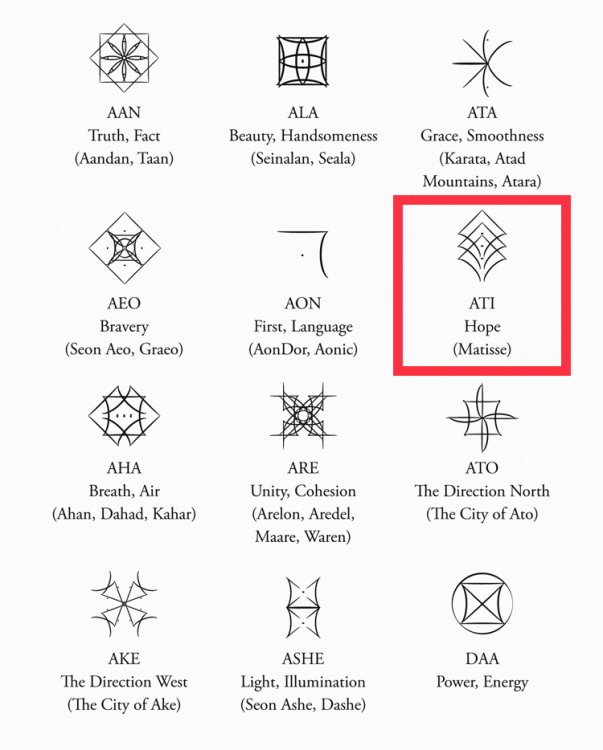



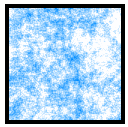

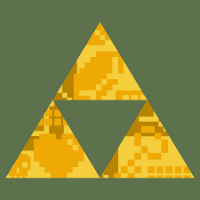
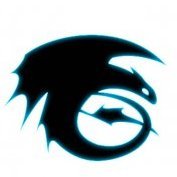
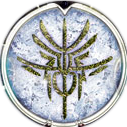
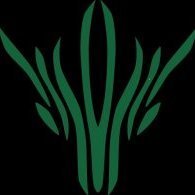
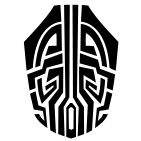
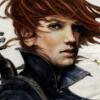


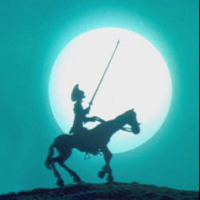
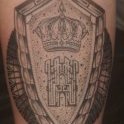

(187x200)(94x100).jpg.2cc51a32db34fd541e7fa894f28ebbfd.thumb.jpg.f6e7f91e31e84c4c9375ba9866dd668f.jpg)